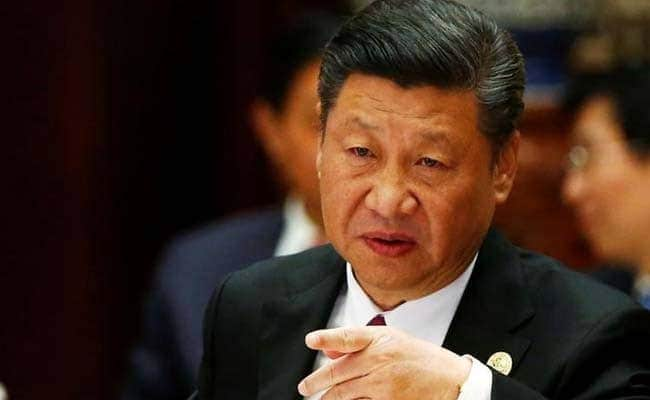New Delhi:
Chinese President Xi Jinping ended the year with a threat against Taiwan, saying that “no one can stop the reunification with China.” He said this while addressing the nation on New Year’s Eve. Beijing has long declared that the entire country of Taiwan is part of China. It has also shown an open and muscular stance by conducting air force and naval exercises around the island.
Beijing and Taipei represent two diametrically opposed ways of life. While Taiwan is a democracy, China is a communist country. Recently, Beijing has increased pressure on Taipei and made every effort to isolate the island from the rest of the world.
China has also conducted three rounds of major military exercises since President Lai Ching-te came to power in Taiwan’s democratic elections in May. Irked by the latest election, Beijing has said it will not abandon the use of force to bring Taiwan under its control. The latest of these military exercises, conducted earlier this month, was the largest in years, according to Taiwanese officials, although Beijing remained quiet about the maneuvers. China has also repeatedly violated Taiwan’s airspace.
In his New Year’s speech, Chinese President Xi Jinping said: “The Chinese people on both sides of the Taiwan Strait are one family. No one can break our blood ties, and no one can stop the historic trend of reunifying the motherland.” President Xi’s comments come at a crucial time: just three weeks before Donald Trump takes office as US president.
Taiwan is a major point of contention between Beijing and Washington. Taiwan is the US’s strategic ally in Asia and Washington is also Taipei’s largest arms supplier. Defending democracy over communism has also been a principled decision by the United States; the Cold War with Russia was entirely based on this principled position.
A BRIEF HISTORY OF CHINA AND TAIWAN
China and Taiwan are separated by the Taiwan Strait – a waterway connecting the South China Sea to the East China Sea between the two countries.
Before the communist revolution, led by Communist Party Chairman Mao Zedong, China was a democratic nation for a short period. There were three presidents in what was then known as the Republic of China (now Taiwan’s official name). The Republic of China became a sovereign nation in 1912 after the fall of the Manchu-led Qing dynasty. This put an end to China’s imperial history.
Between 1912 and 1949, China had four governments: the provisional or interim government in 1912, the Beiyang government from 1912 to 1928, which was led by the military; the nationalist government from 1925 to 1948 led by the Kuomintang; and constitutional government from 1948 to 1949. The constitutional government was overthrown by the civil war in China. The Communist Party, led by Chairman Mao, overthrew the government in a crushing revolution that later spread to Tibet and Xinjiang. The constitutional government had to flee to Taiwan.
Between the mid-1920s and the late 1930s, the Kuomintang had unified the original China (minus currently occupied Tibet, and then the regions of Xinjiang). [part of East Turkestan Republic] to the west, and Soviet-controlled Manchuria to the east (a region separating the rest of Russia and Mongolia from present-day North Korea). During the Russo-Japanese War, Russia ceded southern Manchuria to Japan in 1905, and decades later, in 1931, Japan took over all of Manchuria. Then Japan invaded China during World War II.
The Kuomintang was led by Chiang Kai-shek, who was elected president of the Republic of China until Mao Zedong’s revolution forced him and his Kuomintang party to flee to Taiwan in 1948 and established a government-in-exile in 1949. recognized Chiang Kai-shek’s government as the legitimate government of China until 1971. It was Chiang Kai-shek’s Republic of China (Taiwan) that originally received a permanent seat on the UN Security Council. Council.
Taiwan is now a democracy, but many countries in the world have no diplomatic ties with it, due to pressure from the People’s Republic of China – which has been led since 1949 by Chairman Mao’s party, currently led by Xi Jinping.

